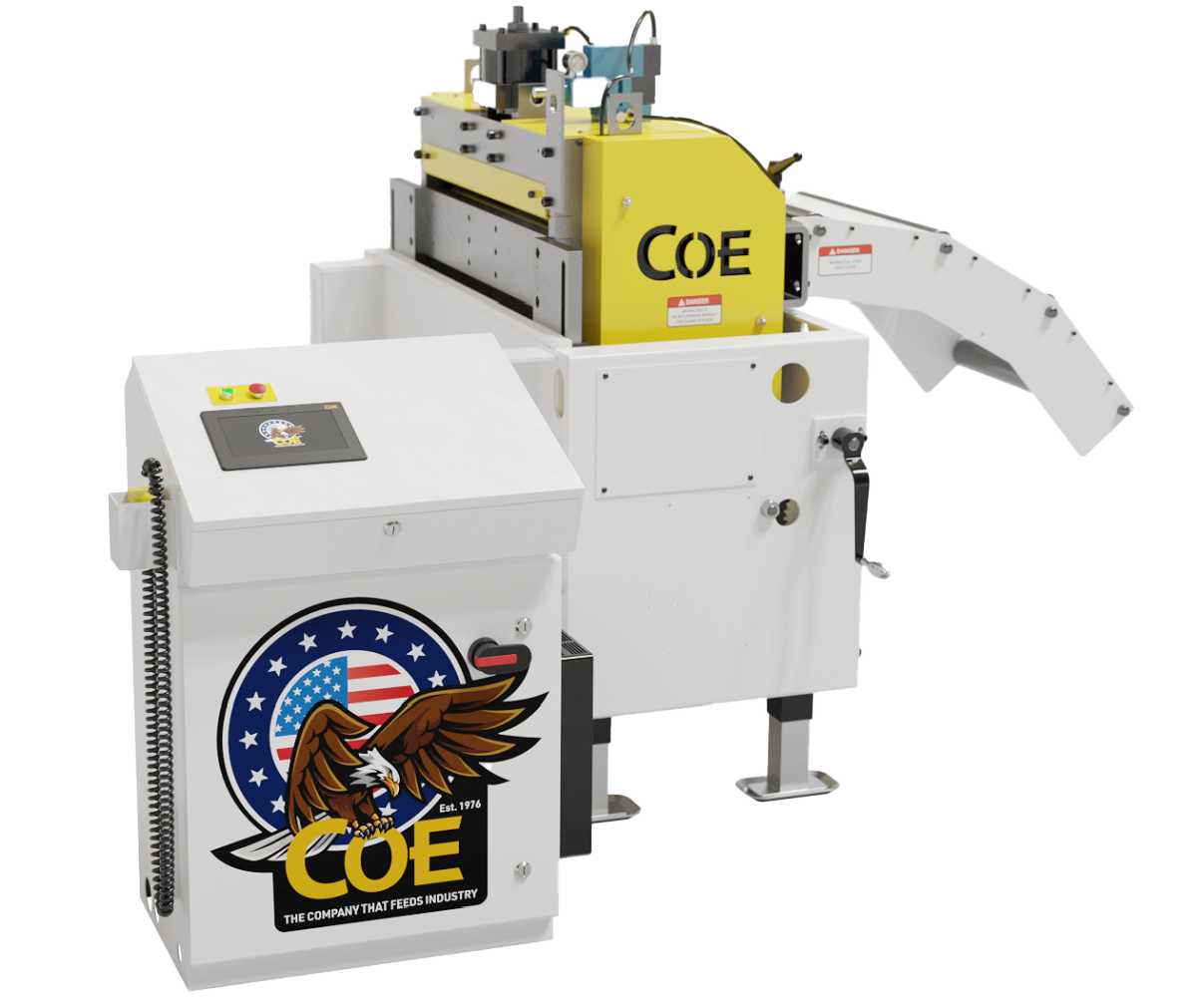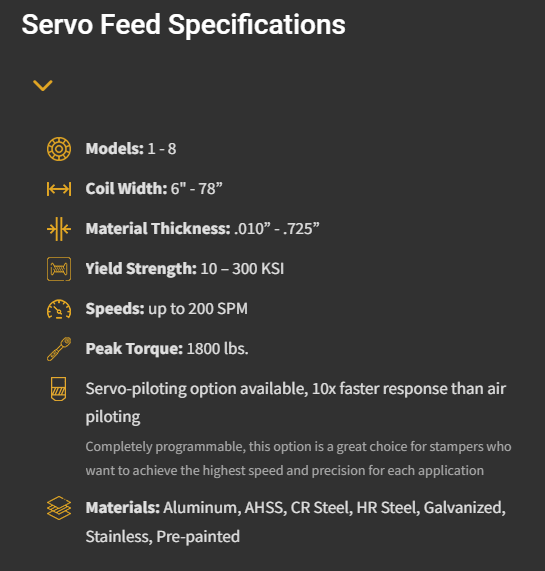At Coe Press Equipment, we pride ourselves on delivering high-quality solutions tailored to meet the unique needs of our customers. One of our key products, the servo feed, exemplifies our commitment to precision and performance. But what exactly goes into ensuring that a servo feed performs optimally? Let’s dive into the ‘Science behind the Solution’ for understanding servo feeds.
 Testing and Validation
Testing and Validation
Our approach begins with rigorous testing based on material width and thickness. These parameters are crucial as they directly influence the pulling power required to advance the material into the die. By understanding the specific dimensions of the material, we can accurately assess the capabilities needed from the servo feed.
Consideration of Pits
Another important factor is whether our customers plan to use a pit for the slack loop. A pit introduces additional weight into the loop, necessitating more power from the motor. The increased load means the motor must work harder to maintain the desired performance levels, and we take this into account during our testing and specification phases.
Die Length and Friction
The length of the die also plays a significant role in the performance of a servo feed. Besides pulling material from the loop, the servo feed must push the material through the die. The longer the die, the more power is required due to increased friction. Our engineers factor in a selectable amount of expected friction based on die length, ensuring that the motor torque is sufficient to handle the load. The longer the die, the greater the friction, and consequently, the more motor torque required.
 Operational Speed
Operational Speed
Speed is another critical element. We need to know the feed length, the degrees of feed angle available, and the strokes per minute (SPM) the customer plans on running. This information is essential for determining the operational parameters of the servo feed.
COE Engineered Formula
Once we have gathered all the necessary data, we input it into our proprietary COE engineered formula. This formula is designed to ensure that the quoted servo feed will exceed the customer’s expectations. It evaluates whether the selected servo feed can meet the required speed and assesses how close the motor is to its peak and continual torque limits. If the calculations indicate that the performance is too close to the motor’s limits, we consider either a larger servo feed or a different drive ratio to enhance the safety range.
Ensuring Excellence
At COE, our sales team is not permitted to quote a servo feed that does not meet or exceed the customer’s requirements. This policy underscores our commitment to delivering reliable and efficient solutions. The ‘Science behind the Solution’ for understanding servo feeds ensures that every servo feed we provide is backed by thorough testing, precise calculations, and a deep understanding of the application’s demands.
In conclusion, our meticulous approach to designing and validating servo feeds highlights our dedication to excellence. By considering factors such as material dimensions, pit usage, die length, and operational speed, and leveraging our COE engineered formula, we ensure that our servo feeds are more than capable of meeting the stringent demands of modern manufacturing processes.
Stay tuned for our next Science Behind the Solution blog, where we will delve into straighteners.
Written by Tom Brockie, Sales.
